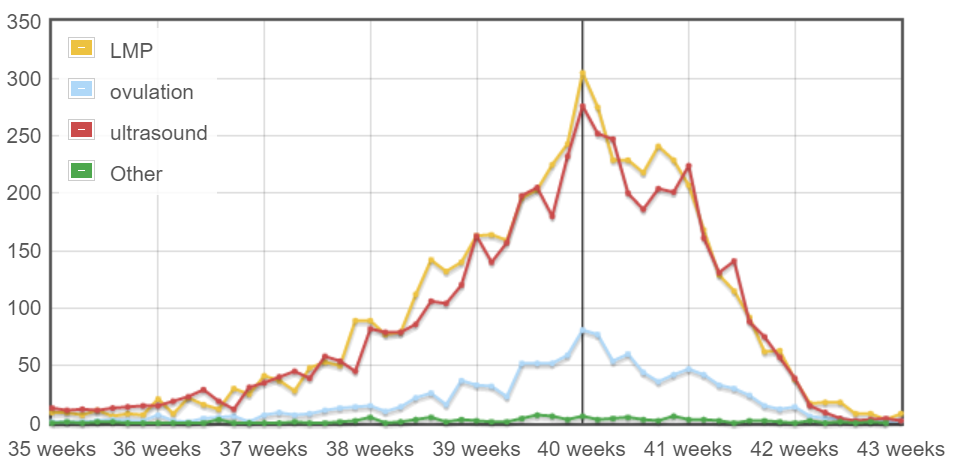This survey assumed that all due dates were set at 280 days, or 40 weeks, past last menstrual period (LMP). If LMP wasn't used, 280 was still the due date marker. For example if the baby came one day after its due date, I assumed that was day 281.
The graph & table on this page show how close the different methods of determination were. The closer they were to a 280 day average, the more accurate. So far no method seems to be dramatically more accurate than just counting 40 weeks past LMP.
| Method of Due Date Determination | # of births | Average Arrival | Average Error (days) | Standard Deviation |
|---|---|---|---|---|
| LMP | 5341 | 39W,5D | 2 | 9.4 |
| ovulation | 1182 | 39W,6D | 1 | 9.2 |
| ultrasound | 5005 | 39W,5D | 2 | 9.8 |
| Other | 98 | 39W,5D | 2 | 10.4 |

